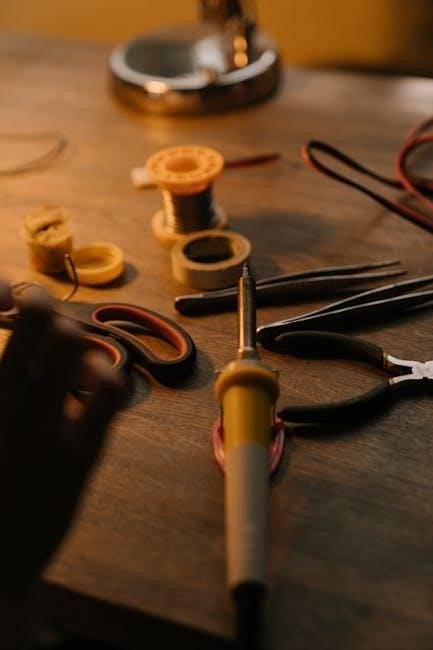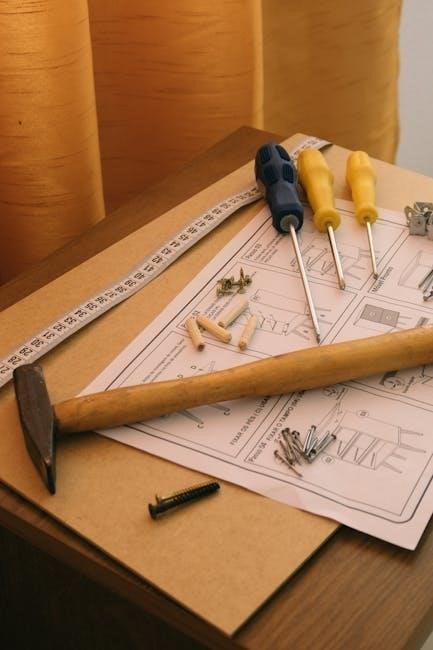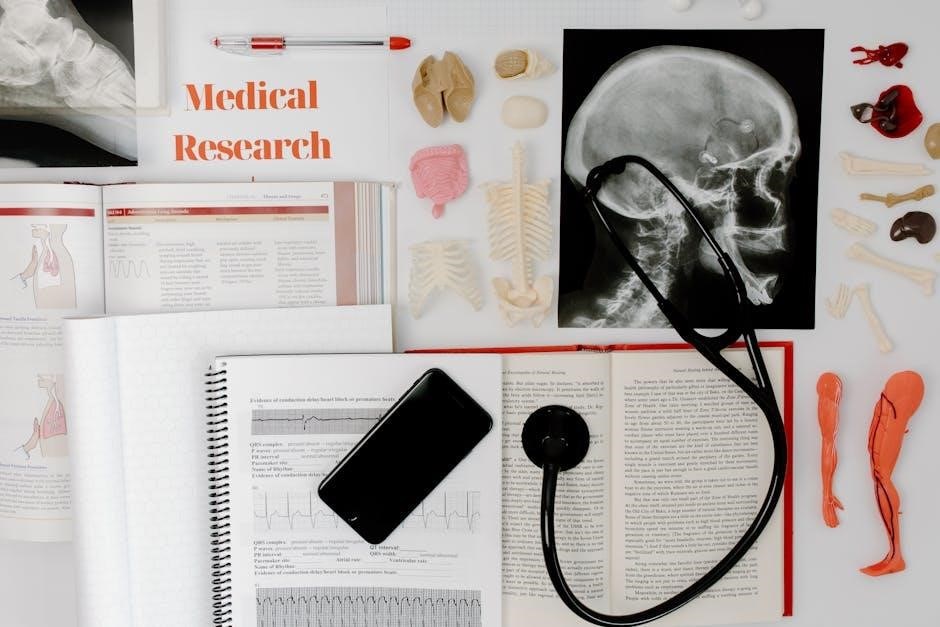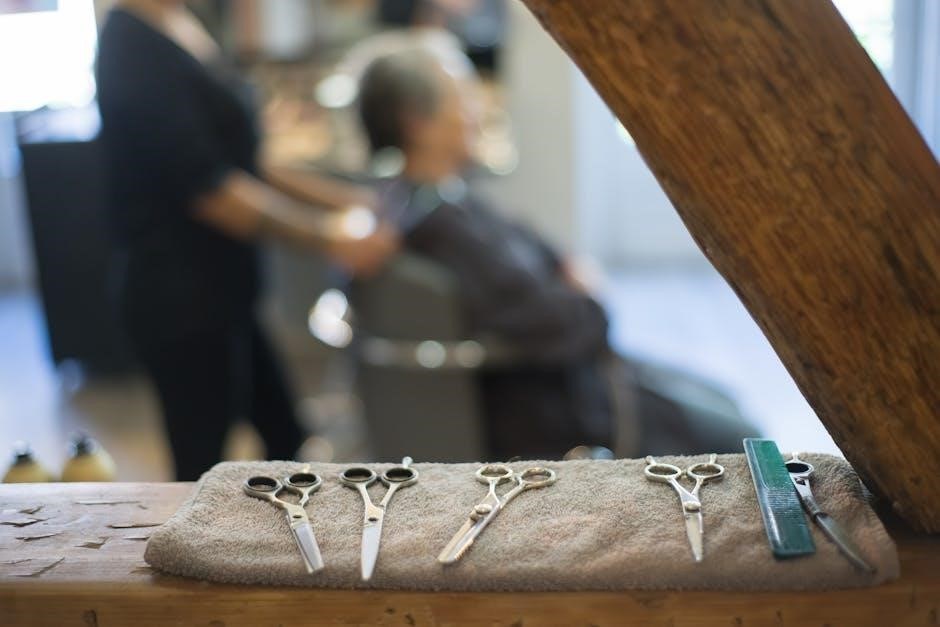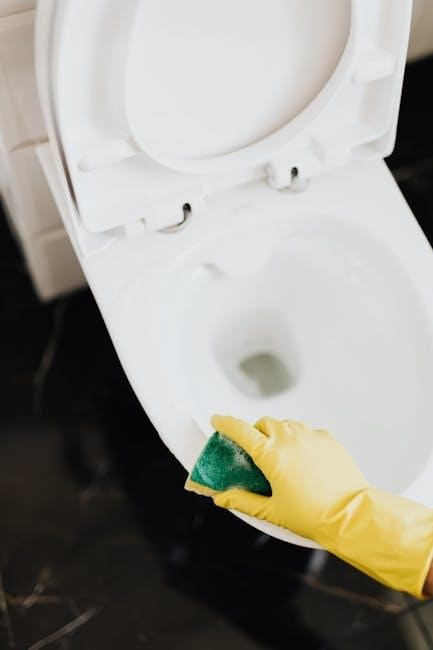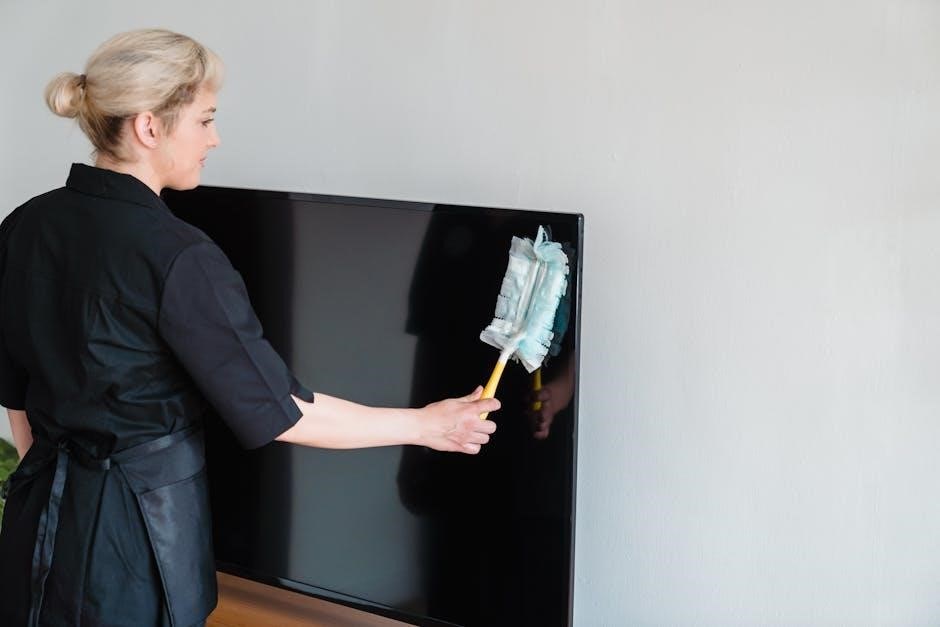Miralax Cleanout in Pediatrics: A Comprehensive Guide
This guide details Miralax use for pediatric bowel preparation and constipation, referencing order sets from November 2023.
It covers dosage, administration, and safety considerations for children.
What is Miralax (Polyethylene Glycol 3350)?
Miralax is a brand name for polyethylene glycol 3350, an osmotic laxative widely utilized in pediatric medicine to address constipation and facilitate bowel preparation. It’s available as a powder that is typically mixed with liquids for oral administration. As of November 2025, it remains a common recommendation for managing bowel issues in children.
Polyethylene glycol 3350 is considered relatively safe for short-term use, but long-term considerations are important, as detailed in package inserts for healthcare professionals dated November 20, 2025. It functions by drawing water into the colon, softening the stool and increasing bowel movements. The medication is not absorbed into the bloodstream, minimizing systemic effects. Patient leaflets, updated March 22, 2024, provide easy-to-read information regarding its use and potential side effects. Dosage guidelines, as of November 7, 2025, are crucial for effective and safe treatment.
How Miralax Works as an Osmotic Laxative
Miralax, containing polyethylene glycol 3350, functions as an osmotic laxative by increasing the water content within the colon. This mechanism isn’t about stimulating the intestinal muscles directly; instead, it draws water into the bowel through osmosis. This influx of water softens the stool, making it easier to pass and relieving constipation. The undigested polyethylene glycol remains in the intestine and isn’t absorbed into the bloodstream, minimizing systemic effects.
Essentially, it creates a more hydrated and voluminous stool, promoting natural bowel movements. This is particularly helpful in pediatric cases where constipation can be caused by factors like diet or dehydration. Information from July 23, 2025, details this process. The package insert (November 20, 2025) confirms this mechanism of action. It’s important to note that while effective, it doesn’t ‘force’ a bowel movement, but rather facilitates the body’s natural process, as highlighted in patient information from March 22, 2024.
Indications for Miralax Use in Pediatric Patients
Miralax is primarily indicated for the relief of occasional constipation in children, addressing infrequent or difficult bowel movements. Pediatric bowel prep, as outlined in the November 2023 order set, represents a key indication, specifically for children requiring direct admission for bowel cleanout or preparation for procedures. It’s also used for managing constipation associated with irritable bowel syndrome (IBS), as noted on July 23, 2025.
Healthcare professionals may recommend Miralax for functional constipation – a common issue in children without underlying organic causes. The ease of administration and generally mild side effect profile make it a frequently chosen option. However, it’s crucial to differentiate between occasional constipation and chronic issues requiring further investigation. The package insert (November 20, 2025) emphasizes appropriate use, and guidelines suggest limiting use to a maximum of seven days for simple constipation relief (August 7, 2025).
Constipation in Children: Common Causes
Constipation in children arises from a multitude of factors, often a combination rather than a single cause. Dietary issues are prevalent, including insufficient fiber intake from fruits, vegetables, and whole grains. Inadequate fluid consumption also contributes significantly, leading to harder stools. Changes in routine, such as starting school or travel, can disrupt bowel habits.
Psychological factors, like stress or anxiety, can play a role, particularly in older children. Occasionally, constipation stems from withholding stool, often due to a painful prior experience, creating a vicious cycle. While less common, underlying medical conditions or medication side effects can also be responsible. It’s important to note that toilet training can sometimes contribute to constipation if approached with excessive pressure. Identifying the root cause is crucial for effective management, and Miralax addresses the symptom of constipation regardless of the underlying etiology.

Pediatric Bowel Prep with Miralax: When is it Necessary?

Pediatric bowel preparation with Miralax becomes necessary in several clinical scenarios. A primary indication is chronic severe constipation unresponsive to initial lifestyle modifications like dietary changes and increased fluid intake. It’s frequently utilized for children requiring direct admission for comprehensive bowel cleanout, as outlined in November 2023 order sets.
Furthermore, Miralax prep is often essential prior to diagnostic procedures, such as colonoscopies or certain imaging studies, to ensure clear visualization of the intestinal tract. It can also be indicated for impacted stool, where a large, hard mass obstructs the bowel. Healthcare professionals determine the necessity based on individual patient assessment, considering the severity and duration of constipation, associated symptoms, and the need for diagnostic clarity. Careful evaluation is paramount to avoid unnecessary intervention.
Miralax Dosage Guidelines for Children

Determining the appropriate Miralax dosage for children requires careful consideration, and should always be guided by a healthcare professional. While specific guidelines vary based on age and the severity of constipation, a common starting point involves a daily dose calculated based on body weight. Detailed dosage and administration information is available as of November 7, 2025.
Dosage adjustments are frequently necessary to achieve optimal results. It’s crucial to initiate treatment with a lower dose and gradually increase it until a bowel movement is achieved, avoiding excessive fluid loss or electrolyte imbalances. The package insert provides comprehensive prescribing information for healthcare professionals, including warnings and precautions; Remember, Miralax should not be used for more than seven days for constipation treatment, as noted on August 7, 2025.
Age-Based Dosage Recommendations
While individualized dosing is paramount, general age-based recommendations for Miralax cleanout in pediatrics exist as a starting point. However, these are not substitutes for professional medical advice. Dosage is frequently determined by a physician, considering the child’s overall health and the severity of constipation.
Specific age groups often receive different initial doses. Infants and toddlers may require lower doses compared to older children and adolescents. The November 2023 pediatric bowel prep order set provides guidance for clinicians. It’s vital to remember that these are merely suggestions, and adjustments are often needed. Always consult a healthcare provider for precise instructions. The official answer from July 18, 2025, emphasizes that a single dose can be taken at any time for relief, but this doesn’t apply to cleanout protocols.
Calculating the Correct Dose
Accurate Miralax dosage calculation is crucial for effective pediatric cleanout, avoiding both under-treatment and potential adverse effects. Dosage isn’t solely based on age; weight plays a significant role. Healthcare professionals typically calculate the dose based on kilograms (kg), not pounds. The goal is to achieve stool consistency appropriate for the intended bowel preparation.
A common starting point, often outlined in pediatric bowel prep protocols (November 2023 order set), involves a specific amount of Miralax per kilogram of body weight. This is then mixed with a designated volume of liquid, ensuring complete dissolution. Remember to use a precise measuring device. The package insert (November 20, 2025) provides detailed pharmacological information aiding in dosage decisions. Always double-check calculations and confirm with a pharmacist or physician before administering.
Administering Miralax to Children: A Step-by-Step Guide

Successful Miralax administration requires careful preparation and execution. First, accurately calculate the prescribed dose based on the child’s weight, as detailed previously. Next, thoroughly mix the Miralax powder with the recommended volume of an acceptable liquid – typically 4-8 ounces (118-237 ml) – ensuring complete dissolution to prevent clumping.
Offer the solution to the child, encouraging them to drink the entire amount over a relatively short period (30-60 minutes) for optimal effect. For younger children or those who resist drinking, using a syringe or medication cup can be helpful. Monitor the child closely after administration, noting any signs of discomfort or adverse reactions; Consistent follow-up, as outlined in bowel prep protocols (November 2023), is essential to assess effectiveness and adjust the regimen if needed.

Mixing Miralax with Liquids: Acceptable Options
When preparing a Miralax solution for children, selecting the right liquid is crucial for palatability and effectiveness. Non-carbonated beverages are universally recommended; avoid fizzy drinks entirely. Water is a neutral and reliable choice, but juice (apple, grape, or orange) can improve acceptance, particularly for younger children. Ensure the juice doesn’t contain pulp, which could interfere with complete dissolution.
Sugar-free options are often preferred to minimize added sugar intake, though some sources suggest sugar-containing drinks may be slightly more effective. Any clear liquid is generally acceptable, provided it’s not overly viscous. The standard mixing ratio is one capful of Miralax (approximately 17 grams) dissolved in 4-8 ounces (118-237 ml) of liquid. Thorough stirring is essential to ensure the powder is fully dissolved before administration.
Duration of Miralax Treatment for Cleanout
The duration of Miralax treatment for bowel cleanout in pediatric patients varies depending on the severity of constipation and the individual child’s response. Typically, a cleanout regimen lasts between one to three days, but this should always be determined by a healthcare professional. For occasional constipation, Miralax should not be used for more than seven days consecutively, as per current guidelines.
During the cleanout phase, expect increased stool frequency and potentially looser stools. Once the cleanout is complete and regular bowel movements are established, Miralax can be transitioned to a maintenance dose, if needed, under medical supervision. Prolonged, continuous use without addressing the underlying cause of constipation is discouraged. Regular follow-up with a pediatrician is vital to assess the child’s progress and adjust the treatment plan accordingly.
Potential Side Effects of Miralax in Pediatric Patients
While generally considered safe, Miralax can cause side effects in pediatric patients. Common Side Effects typically include bloating, gas, stomach cramping, and nausea, which are usually mild and resolve on their own. Increased thirst is also frequently reported, emphasizing the importance of adequate hydration during treatment.
Rare but Serious Side Effects, though uncommon, require immediate medical attention. These can include severe abdominal pain, vomiting, or signs of an allergic reaction like rash, hives, or difficulty breathing. There have been reports, though not definitively linked, of neuropsychiatric events with prolonged or excessive Miralax use; therefore, careful monitoring is crucial. Parents should promptly report any unusual or concerning symptoms to their child’s healthcare provider. Always review the package insert for a complete list of potential adverse reactions.
Common Side Effects
The most frequently observed side effects of Miralax in children are generally mild and self-limiting. These Common Side Effects often include gastrointestinal discomfort such as bloating and the presence of excess gas. Many children experience mild stomach cramping, which typically subsides quickly. Nausea is also a reported symptom, though usually not severe.

Increased thirst is a common occurrence, highlighting the necessity of encouraging adequate fluid intake while administering Miralax. Some children may experience minor changes in stool consistency. These side effects are typically transient and do not necessitate discontinuation of treatment unless they become bothersome or worsen. Parents should ensure their child remains hydrated and monitor for any escalation of symptoms.
Rare but Serious Side Effects
Although infrequent, serious side effects from Miralax require immediate medical attention. Allergic reactions, though rare, can manifest as rash, hives, swelling of the face or throat, and difficulty breathing. These demand urgent care. Electrolyte imbalances, while uncommon, are a potential concern, particularly with prolonged or excessive use, potentially leading to cardiac issues.

Severe abdominal pain, accompanied by vomiting or inability to pass gas, could indicate a bowel obstruction and necessitates prompt evaluation. Dehydration, despite encouraging fluid intake, is another serious sign. In very rare instances, neurological symptoms have been reported. Parents should be vigilant and seek professional medical advice if any unusual or concerning symptoms arise during or after Miralax administration.
Miralax User Reviews and Ratings
Miralax generally receives positive feedback from users, with an average rating of 7.2 out of 10 based on 266 reviews on Drugs.com as of August 7, 2025. Approximately 64% of reviewers report a positive experience, highlighting its effectiveness in relieving constipation and easing bowel movements. Many parents appreciate its gentle action and palatability when mixed with beverages.
However, around 22% of reviewers share negative experiences, citing issues like lack of effect, bloating, or abdominal discomfort. Some users mention the need for consistent use to maintain regularity. It’s important to note individual responses vary. While many find Miralax a safe and effective solution, others may require alternative approaches. Consulting a pediatrician is crucial to determine if Miralax is appropriate for a child’s specific needs and to monitor for any adverse effects.
Interactions with Other Medications
While Miralax (polyethylene glycol 3350) is generally considered safe, potential interactions with other medications should be considered, particularly during a pediatric cleanout. Miralax itself doesn’t typically directly interact with most drugs, as it’s not significantly absorbed into the bloodstream. However, its osmotic effect can alter the absorption of concurrently administered oral medications.
The increased bowel motility induced by Miralax may reduce the time medications spend in the gastrointestinal tract, potentially decreasing their absorption and effectiveness. This is especially relevant for drugs with a narrow therapeutic window or those requiring consistent absorption. Careful timing of medication administration – separating Miralax from other oral medications by at least two hours – is often recommended. Always inform your pediatrician of all medications your child is taking to assess potential interactions and ensure optimal treatment outcomes.
Precautions and Warnings When Using Miralax
When utilizing Miralax for pediatric cleanout, several precautions and warnings must be observed. Prolonged use – exceeding seven days for constipation treatment – is not recommended without a healthcare professional’s guidance. While generally well-tolerated, Miralax can cause electrolyte imbalances, particularly with excessive doses or prolonged use, potentially leading to dehydration.
Careful monitoring of fluid intake is crucial during cleanout. Parents should be vigilant for signs of dehydration, such as decreased urination, dry mouth, and dizziness. Miralax should be used cautiously in children with underlying medical conditions, including kidney disease or bowel obstruction. It’s essential to consult a pediatrician before initiating Miralax therapy, especially if the child is taking other medications or has a history of gastrointestinal issues. Always adhere to the recommended dosage guidelines to minimize potential risks.
Monitoring a Child During Miralax Cleanout
Close monitoring is paramount during a Miralax cleanout in pediatric patients. Parents should meticulously track the frequency and consistency of bowel movements, noting any changes from the baseline. Observe for signs of dehydration, including decreased urination, dry mouth, and lethargy, ensuring adequate fluid intake throughout the process.

Assess the child’s overall well-being, paying attention to abdominal discomfort, cramping, or bloating. Any reports of severe pain warrant immediate medical attention. Regularly check for electrolyte imbalances, though this typically requires professional assessment. Document the time and amount of each Miralax dose administered, alongside bowel movement details, to provide a comprehensive record for the healthcare provider. Consistent observation and detailed documentation are key to a safe and effective cleanout.
When to Contact a Healthcare Professional
Promptly contact a healthcare professional if a child experiences severe abdominal pain, persistent vomiting, or rectal bleeding during a Miralax cleanout. Any signs of dehydration – decreased urination, dry mouth, or lethargy – require immediate attention. If the child fails to have any bowel movements within 24-48 hours of initiating treatment, seek medical advice.

Furthermore, consult a doctor if the child develops a fever, exhibits signs of an allergic reaction (rash, hives, swelling), or shows any other concerning symptoms. Do not hesitate to reach out if you have any questions or uncertainties regarding the Miralax dosage or the cleanout process itself. Professional guidance ensures the child’s safety and optimizes treatment effectiveness. Ignoring concerning symptoms could lead to complications.
MiraLAX Package Insert Information for Healthcare Professionals
MiraLAX (polyethylene glycol 3350) is indicated for the relief of occasional constipation. The package insert details that it functions as an osmotic laxative, drawing water into the colon to soften stool. Healthcare professionals should note that while generally well-tolerated, adverse reactions can occur, though they are typically mild.
The prescribing information, updated November 20, 2025, emphasizes careful assessment of patients, particularly children, before initiating treatment. It highlights the importance of ruling out underlying medical conditions causing constipation. Dosage adjustments may be necessary based on individual patient response and severity of symptoms. The insert also provides guidance on potential drug interactions and contraindications, urging cautious use in patients with certain pre-existing conditions. Always refer to the complete package insert for comprehensive details.
Long-Term Use of Miralax: Considerations
Prolonged Miralax use in pediatric patients warrants careful consideration. While effective for initial cleanout and managing occasional constipation, reliance on long-term osmotic laxatives can potentially disrupt natural bowel function. Healthcare professionals should investigate and address the underlying causes of chronic constipation rather than solely managing symptoms.
Regular assessment is crucial to evaluate the continued necessity of Miralax. Strategies to promote bowel regularity, such as dietary modifications (increased fiber and fluid intake) and behavioral interventions, should be implemented alongside or as alternatives to ongoing medication. Concerns regarding potential electrolyte imbalances with extended use necessitate periodic monitoring. The goal should be to wean patients off Miralax gradually, fostering independent bowel habits and minimizing dependence on pharmacological intervention.












































